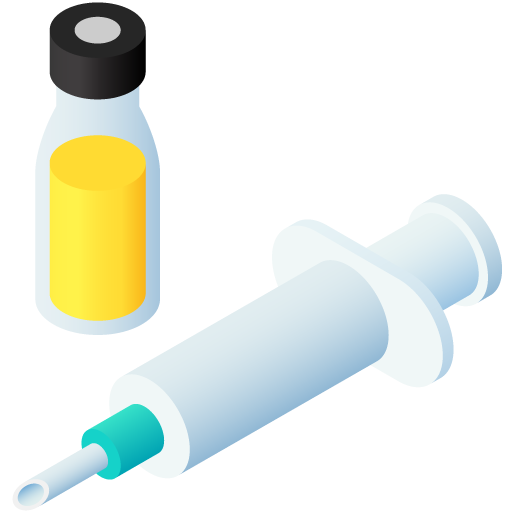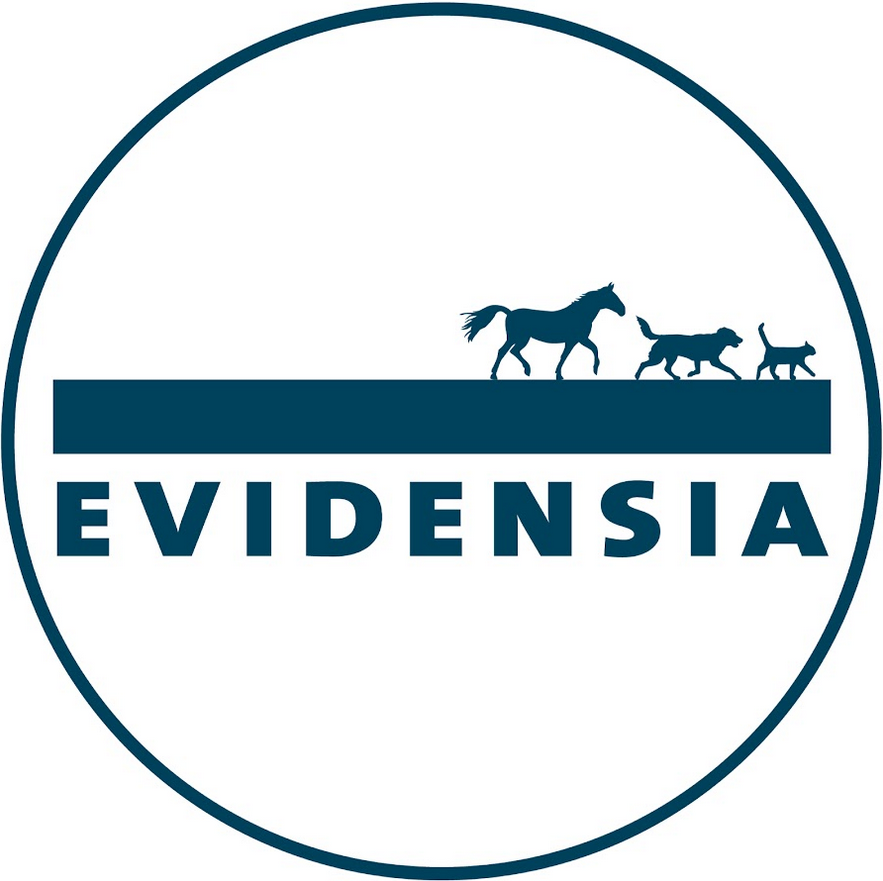Combination therapy
No results were found for your selected species
Canigen L4
Active substance
ATC code
Species
Dogs.
Indications
For active immunisation of dogs against:
- L. interrogans serogroup Canicola serovar Canicola to reduce infection and urinary excretion
- L. interrogans serogroup Icterohaemorrhagiae serovar Copenhageni to reduce infection and urinary excretion
- L. interrogans serogroup Australis serovar Bratislava to reduce infection
- L. kirschneri serogroup Grippotyphosa serovar Bananal/Lianguang to reduce infection and urinary excretion
Onset of immunity: 3 weeks.
Duration of immunity: 1 year.
Dose to be administered and administration route
Subcutaneous use.
Before use, ensure that the vaccine is at room temperature (15 °C – 25 °C).
Administer two vaccinations of 1 dose (1 ml) of vaccine with an interval of 4 weeks to dogs from 6 weeks of age onwards.
Vaccination schedule:
Primary vaccination:
The first vaccination can be administered from 6 to 9(*) weeks of age and the second vaccination from 10 to 13 weeks of age.
Revaccination:
Dogs should be re-vaccinated annually with one dose (1 ml) of vaccine.
(*) In case of high level of maternally derived antibodies, first vaccination is recommended at 9 weeks of age.
For simultaneous use, 1 dose of a Canigen vaccine containing canine distemper virus, canine adenovirus type 2, canine parvovirus (strain 154) and/or canine parainfluenza virus components should be reconstituted with 1 dose (1 ml) of this vaccine. The mixed vaccines should be at room temperature (15 °C – 25 °C) before they are administered by subcutaneous injection.
Adverse reactions
Dogs:
|
Very common (>1 animal / 10 animals treated): |
Injection site swelling[1], Injection site nodule1, Injection site pain[2], Elevated temperature[3], Decreased activity4, Decreased appetite4. |
|
Very rare (<1 animal / 10,000 animals treated, including isolated reports): |
Hypersensitivity reactions5, Immune mediated haemolytic anaemia, Immune mediated thrombocytopenia, Immune mediated polyarthritis. |
1 ≤ 4 cm; subsides within 14 days.
2 Subsides within 14 days.
3 ≤ 1 °C, up to 3 days.
4 In pups.
5 Reactions are transient. This includes anaphylaxis (sometimes fatal). If such reaction occurs, appropriate treatment should be administered without delay.
Reporting adverse events is important. It allows continuous safety monitoring of a veterinary medicinal product. Reports should be sent, preferably via a veterinarian, to either the marketing authorisation holder or the national competent authority via the national reporting system. See also section 16 of the package leaflet for contact details.
Dispensing
POM-V - Prescription Only Medicine – VeterinarianSUMMARY OF PRODUCT CHARACTERISTICS
1. NAME OF THE VETERINARY MEDICINAL PRODUCT
Canigen Lepto 4, Suspension for Injection for Dogs
2. QUALITATIVE AND QUANTITATIVE COMPOSITION
Each dose of 1 ml contains:
Active substances:
|
Inactivated Leptospira strains: |
|
|
|
|
L. interrogans serogroup Canicola serovar Portland-vere (strain Ca-12-000) |
3,550-7,100 U1 |
|
- |
L. interrogans serogroup Icterohaemorrhagiae serovar Copenhageni (strain Ic-02-001) |
290-1,000 U1 |
|
- |
L. interrogans serogroup Australis serovar Bratislava (strain As-05-073) |
500-1,700 U1 |
|
- |
L. kirschneri serogroup Grippotyphosa serovar Dadas (strain Gr-01-005) |
650-1,300 U1 |
1 Antigenic mass ELISA units.
For the full list of excipients, see section 6.1.
3. PHARMACEUTICAL FORM
Suspension for injection. Colourless suspension.
4. CLINICAL PARTICULARS
4.1 Target species
Dogs.
4.2 Indications for use, specifying the target species
For active immunisation of dogs against:
- L. interrogans serogroup Canicola serovar Canicola to reduce infection and urinary excretion
- L. interrogans serogroup Icterohaemorrhagiae serovar Copenhageni to reduce infection and urinary excretion
- L. interrogans serogroup Australis serovar Bratislava to reduce infection
- L. kirschneri serogroup Grippotyphosa serovar Bananal/Lianguang to reduce infection and urinary excretion
Onset of immunity: 3 weeks.
Duration of immunity: 1 year.
4.3 Contraindications
None.
4.4 Special warnings for each target species
Vaccinate healthy animals only.
4.5 Special precautions for use
Special precautions for use in animals Not applicable.
Special precautions to be taken by the person administering the veterinary medicinal product to animals
Avoid accidental self-injection or contact with the eyes. In case of eye contact, rinse the eye(s) with water. In case of self-injection or ocular irritation, seek medical advice immediately and show the package leaflet or the label to the physician.
4.6 Adverse reactions (frequency and seriousness)
A mild and transient increase in body temperature (≤ 1 °C) has been observed very commonly in clinical studies for a few days after vaccination, with some pups showing less activity and/or a reduced appetite.
A small transient swelling at the site of injection (≤ 4 cm), which can occasionally be firm and painful on palpation, has been observed very commonly in clinical studies. Any such swelling will either have disappeared or be clearly diminished by 14 days post-vaccination.
Clinical signs of immune-mediated haemolytic anaemia, immune-mediated thrombocytopenia, or immune-mediated polyarthritis have been reported in very rare cases.
A transient acute hypersensitivity reaction may occur in very rare cases. Such reactions may evolve to a more severe condition (anaphylaxis), which may be lifethreatening. If such reactions occur, appropriate treatment is recommended.
The frequency of adverse reactions is defined using the following convention:
- very common (more than 1 in 10 animals treated displaying adverse reaction(s))
- common (more than 1 but less than 10 animals in 100 animals treated)
- uncommon (more than 1 but less than 10 animals in 1,000 animals treated)
- rare (more than 1 but less than 10 animals in 10,000 animals treated)
- very rare (less than 1 animal in 10,000 animals treated, including isolated reports).
4.7 Use during pregnancy, lactation or lay
Can be used during pregnancy.
4.8 Interaction with other medicinal products and other forms of interaction
Safety and efficacy data are available which demonstrate that this vaccine can be mixed and administered with vaccines in the Canigen range containing canine distemper virus strain Onderstepoort, canine adenovirus type 2 strain Manhattan LPV3, canine parvovirus strain 154 and/or canine parainfluenza virus strain Cornell components for subcutaneous administration where authorised.
The product information of the relevant Canigen vaccines should be consulted before administration of the mixed product. When mixed with these Canigen vaccines, the demonstrated safety and efficacy claims for Canigen Lepto 4 are no different from those described for Canigen Lepto 4 alone. When mixed with Canigen vaccines containing canine parainfluenza virus strain Cornell at annual revaccination, it has been established that there is no interference with the anamnestic response induced by the injectable canine parainfluenza virus component.
Safety and efficacy data are available which demonstrate that this vaccine can be administered on the same day but not mixed with vaccines in the Canigen range containing Bordetella bronchiseptica strain B-C2 and/or canine parainfluenza virus strain Cornell components for intranasal administration.
Safety data are available which demonstrate that this vaccine can be administered at the same time but not mixed with the inactivated vaccine of the Canigen range against Bordetella bronchiseptica. When this vaccine is administered in association with the inactivated vaccine of the Canigen range against Bordetella bronchiseptica, the demonstrated antibody response data and other immunity data of this vaccine are the same as when this vaccine is administered alone.
No information is available on the safety and efficacy of this vaccine when used with any other veterinary medicinal product except the products mentioned above. A decision to use this vaccine before or after any other veterinary medicinal product therefore needs to be made on a case by case basis.
4.9 Amounts to be administered and administration route
Subcutaneous use.
Before use, ensure that the vaccine is at room temperature (15 °C – 25 °C).
Administer two vaccinations of 1 dose (1 ml) of vaccine with an interval of 4 weeks to dogs from 6 weeks of age onwards.
Vaccination scheme:
Basic vaccination: The first vaccination can be administered from 6 to 9(*) weeks of age and the second vaccination from 10 to 13 weeks of age.
Revaccination: Dogs should be re-vaccinated annually with one dose (1 ml) of vaccine.
(*) In case of high level of maternally derived antibodies, first vaccination is recommended at 9 weeks of age.
For simultaneous use with Canigen vaccines where authorised:
1 dose of a Canigen vaccine containing canine distemper virus strain Onderstepoort, canine adenovirus type 2 strain Manhattan LPV3, canine parvovirus strain 154 and/or canine parainfluenza virus strain Cornell components should be reconstituted with 1 dose (1 ml) of Canigen Lepto 4. The mixed vaccines should be at room temperature (15 °C – 25 °C) before they are administered by subcutaneous injection.
4.10 Overdose (symptoms, emergency procedures, antidotes), if necessary
No adverse reactions other than those mentioned in section 4.6 were observed after the administration of a double dose of vaccine. However, these reactions may be more severe and/or last longer. For example, local swelling, which can be up to 5 cm in diameter and which may take over 5 weeks to completely disappear, may be observed at the site of injection.
4.11 Withdrawal period Not applicable.
5. IMMUNOLOGICAL PROPERTIES
Pharmacotherapeutic group: Immunologicals for Canidae, inactivated bacterial vaccine.
ATCvet code QI07AB01.
To stimulate active immunity in dogs against L. interrogans serogroup Canicola serovar Canicola, L. interrogans serogroup Icterohaemorrhagiae serovar
Copenhageni, L. interrogans serogroup Australis serovar Bratislava, and L. kirschneri serogroup Grippotyphosa serovar Bananal/Lianguang.
In vitro and in vivo data in non-target species suggest that the vaccine may provide a degree of cross-protection against L. interrogans serogroup Icterohaemorrhagiae serovar Icterohaemorrhagiae and L. kirschneri serogroup Grippotyphosa serovar Grippotyphosa.
6. PHARMACEUTICAL PARTICULARS
6.1 List of excipients
Sodium chloride
Potassium chloride
Disodium phosphate dihydrate
Potassium dihydrogen phosphate Water for injections
6.2 Major incompatibilities
Do not mix with any other veterinary medicinal products except those mentioned in section 4.8.
6.3 Shelf life
Shelf life of the veterinary medicinal product as packaged for sale: 21 months.
Shelf life after first opening the immediate packaging: use immediately.
Shelf life after reconstitution of Canigen vaccines according to directions: 45 minutes.
6.4 Special precautions for storage
Store in a refrigerator (2 °C – 8 °C).
Do not freeze.
Protect from light.
6.5 Nature and composition of immediate packaging
Type I glass vial of 1 ml (1 dose) closed with a halogenobutyl rubber stopper and sealed with a coded aluminium cap.
Pack sizes:
Plastic box with 10 vials of 1 ml (1 dose).
Plastic box with 50 vials of 1 ml (1 dose).
Not all pack sizes may be marketed.
6.6 Special precautions for the disposal of unused veterinary medicinal product or waste materials derived from the use of such products
Any unused veterinary medicinal product or waste materials derived from such veterinary medicinal product should be disposed of in accordance with local requirements.
7. MARKETING AUTHORISATION HOLDER
MSD Animal Health UK Limited
Walton Manor
Walton
Milton Keynes
Buckinghamshire
MK7 7AJ
8. MARKETING AUTHORISATION NUMBER
Vm 01708/5030
9. DATE OF FIRST AUTHORISATION
3 July 2015
10. DATE OF REVISION OF THE TEXT
October 2022

Approved: 17 October 2022

| Art. Nr. | 01708/5030 |
|---|---|
| EAN | 8713184139641 |
 TRUSTED SOURCE
TRUSTED SOURCE








